Learn
Declaring Independence from Britain
The delegates of the Second Continental Congress drafted and sent a letter to King George III called the Olive Branch Petition on July 8, 1775. This letter urged King George III to consider a compromise between the colonies and Britain; however, King George III rejected the plea and declared the colonies were "in rebellion". This rejection angered many colonists and inspired some to action.

Ideas Behind the Independence
The struggle for power and victory between the American colonists and Great Britain was now underway on the battlefield; however, there was a deeper struggle taking place among Americans concerning the role of government in the lives of citizens.
Military conflicts between the American colonists and British forces amplified the colonists' fervor for freedom and independence. Soon the colonists would no longer simply be fighting for representation in a British Parliament or for the British King to listen to their grievances, but for freedom and the right to start a new country governed by free men.
Early English Documents
Colonists looked to early English documents as the foundation of their beliefs concerning the balance between the rights of citizens and the need for government and social order.
Magna Carta: In 1215, English barons forced King John to sign a charter guaranteeing certain civil and political freedoms that eventually protected the rights of all Englishmen.

English Bill of Rights: Enacted in 1689, it prohibited the king from suspending or passing laws and from raising taxes without Parliament's consent. It also guaranteed the right to a fair and speedy trial and prohibited cruel and unusual punishment.
Common Sense
Colonists weren't just influenced by historical documents in their governmental ideas.
In January 1776, Thomas Paine, a colonist who wanted to urge the colonies to join the rebellion, wrote a 47-page pamphlet titled Common Sense. Distributed in the colonies after the Olive Branch Petition failed, the pamphlet was an attack on King George III and a call to action for colonists. Paine believed that the king had made it clear that he was unwilling to negotiate with the colonies. He used Lexington and Concord site of the first shots of the Revolutionary War between Britain and the colonies as "proof" of that. Paine believed that the king would rather fight the colonies than negotiate with them.
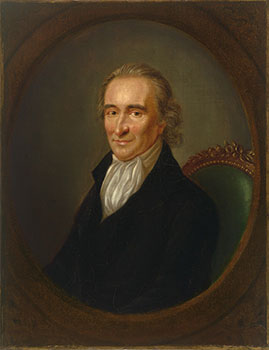
Watch the video Thomas Paine: Writer and Revolutionary (3:41). PBS login information.
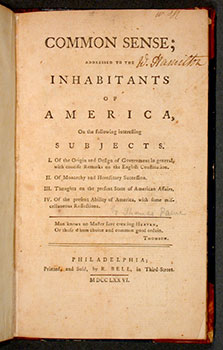
Using common, everyday, easy-to-understand language, Paine's pamphlet helped generate support for the independence movement, especially among colonists who were unsure about going against Britain. These colonists were referred to as "Loyalists" and those supporting independence from Britain were referred to as "Patriots".
The pamphlet sold almost 500,000 copies and reached over 150,000 colonists!
It was endorsed by George Washington, who said, "I find Common Sense is working a powerful change in the minds of many men." Paine was inspired by the concepts of freedom and natural rights, both ideas that reflected the philosophies of the Enlightenment.l The Enlightenment was an Age of Reason that took place in the late 17th-early 18th centuries and emphasized science and reason.
Declaring Independence
By summer of 1776, some colonies such as North Carolina had already declared themselves independent of Britain. On June 7, 1776, Richard Henry Lee, a delegate from Virginia, urged Congress that "these United Colonies are, and of a right ought to be, free and independent states."

In order to state the reasons for a separation from Britain, Congress appointed a committee to prepare a formal declaration and chose Thomas Jefferson farmer, planter, and future 3rd president of the United States to express the committee's points.

Like Thomas Paine and other colonial leaders, Jefferson was inspired by Enlightenment thinkers such as John Locke, Jean-Jacques Rousseau, and Charles de Montesquieu.
John Locke believed in the "natural rights" of life, liberty and property. He wrote, "The end of civil society is civil peace and prosperity." In this context, "end" means "a goal or result that one seeks to achieve".
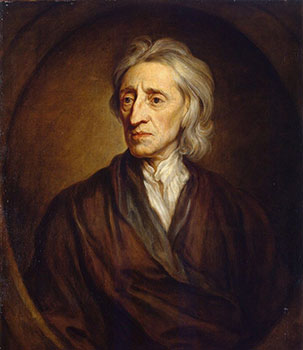
Jean-Jacques Rousseau believed that society should be ruled by the will of the people.

Charles de Montesquieu recommended a separation of governmental power so that too much power was not concentrated in the hands of one individual.
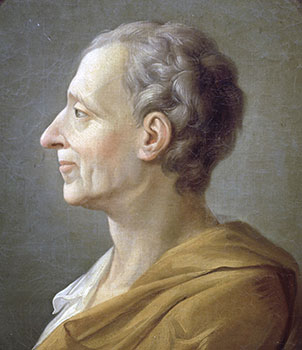
Jefferson separated the Declaration of Independence into four parts.
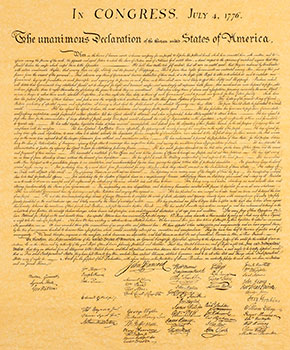
- The Preamble, or introduction, stated the purpose for the separation. This section was inspired by both Locke and Rousseau's ideas that rule should come from the people and the government received its power from the people.
- A declaration of rights, including the "natural rights" John Locke originally proposed, but Jefferson changed the wording to "inalienable rights" including "life, liberty, and the pursuit of happiness."
- A list of the reasons for the separation, mainly composed of complaints about the king's rule, largely inspired by de Montesquieu's belief that too much power in one person's hands leads to tyranny.
- A final resolution of independence for the colonies to become "free and independent states."
Read this interactive Declaration of Independence to see the entire document.
As you probably know, the Declaration included the phrase, "All men are created equal." This statement was meant to express the belief that free citizens were political equals, but it wasn't intended to include women, Native Americans, or African Americans. However, this idea would later inspire these groups to challenge traditional views.
On July 2, 1776, the Second Continental Congress voted unanimously that the American colonies were free and independent. On July 4, 1776, the Congress formally adopted the declaration. When the document was signed by the delegates, the United States of America was officially born!

Although the signing of the Declaration of Independence is recognized as a celebration now (Independence Day), at the time, the document was essentially a declaration of war! This added to the divide between the Loyalists and Patriots, forcing all colonists to choose sides.